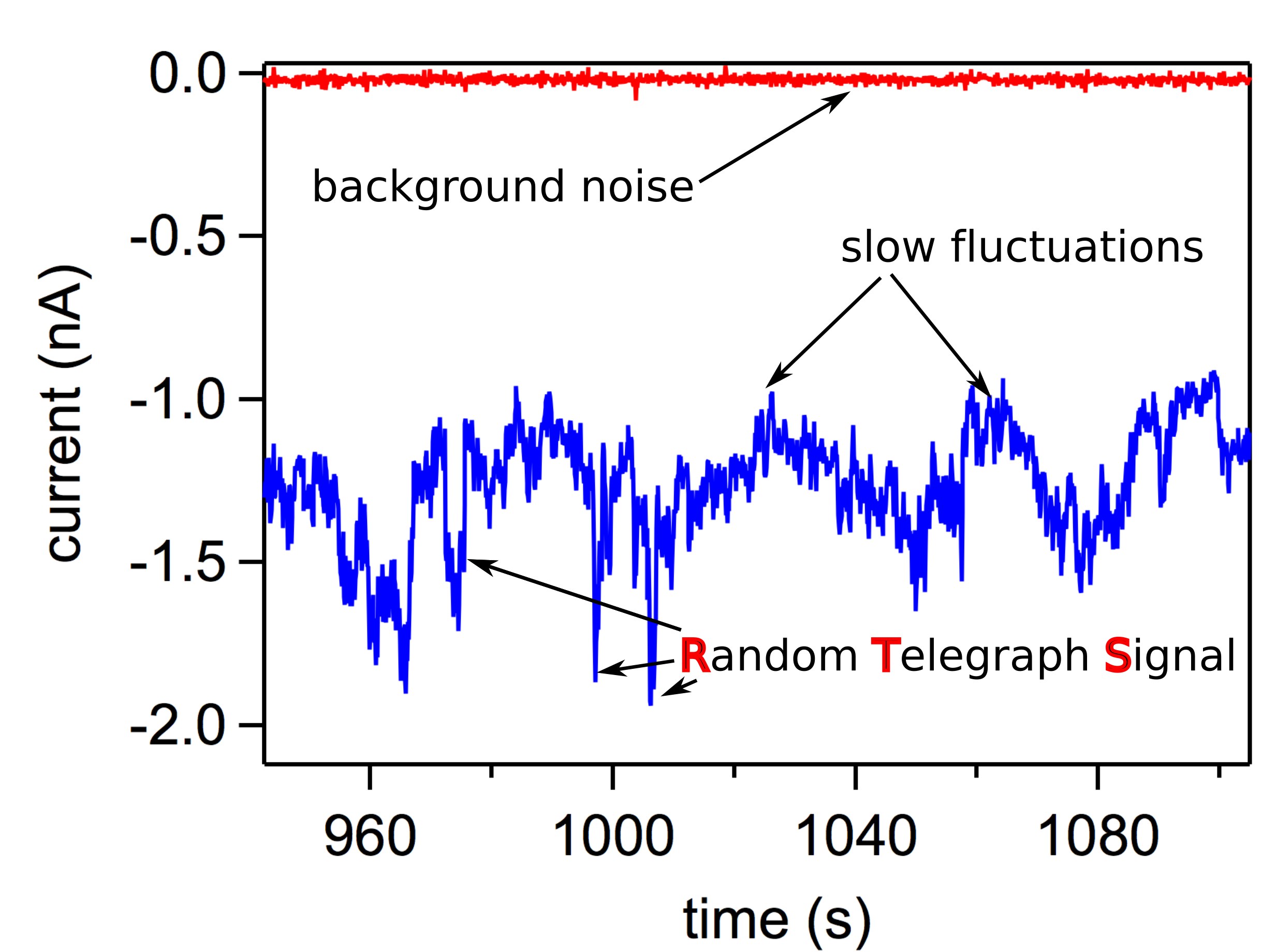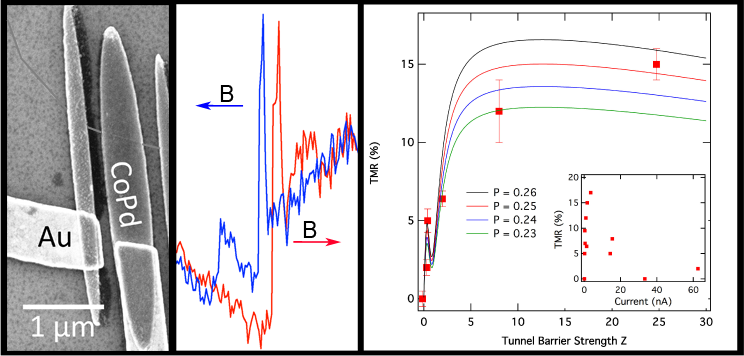Hauptinhalt
Topinformationen
Electronic Transport
CNT quantum dots as detectors for molecular states
Quantum dots on CNTs are very stable and easily formed, since a CNT already provides a one-dimensional band structure and leads from almost all metals exhibit a tunnel barrier.

We fabricate quantum dots on CNTs functionalized with molecules based on a field-effect transistor (FET) device (left). At low temperature and low bias voltage, individual electrons tunnel sequentially from source to drain electrode (center). Such devices are also called "single electron transistor" (SET) and very sensitive charge detectors. With increasing bias voltage, they show a staircase like increase of the current. The steps are smeared out due to the energy distribution of the electrons caused by temperature following the Fermi-function. The detector is most sensitive at the steepest slope identified as the work point (right).
 |
While the background noise of the system is very low (red trace), the device exhibits strong noise at the working point (blue trace). As common for CNT-FETs, the dominating contribution is due to pink noise (1/f-noise). Sydoruk et al., Nanotechnology 25, 035703 (2014). However, on top of the slow fluctuations, a clear RTS is visible caused by fluctuating molecular states of the complexes attached to the quantum dot. |
Magnetoresistance and spin injection in CNTs
Magnetoresistance in one-dimensional, ballistic conductors as CNTs is of fundamental interest in spintronics. Recently, we discovered and investigated the influence of the tunnel-barrier strength on the magnetoresistance in CNT spin valves (below).
Morgan et al, Phys. Rev. Applied 5, 054010 (2016), Misiorny and Meyer, Phys. Rev. Applied 7, 024011 (2017).

A CNT contacted with ferromagnetic CoPd (left) shows a clear magnetoresistance signal (center), if the contacts have the appropriate asymmetry. Depending on the tunnel barrier strength, the magnetoresistance effect varies between 2% and 15% (right). Modelling the data using the scattering matrix approach we find that about 24% of the injected carriers are spin polarized. Non-local Hanle experiments are used to prove the spin injection and yield a spin coherence time of t = 1.1 ns.



